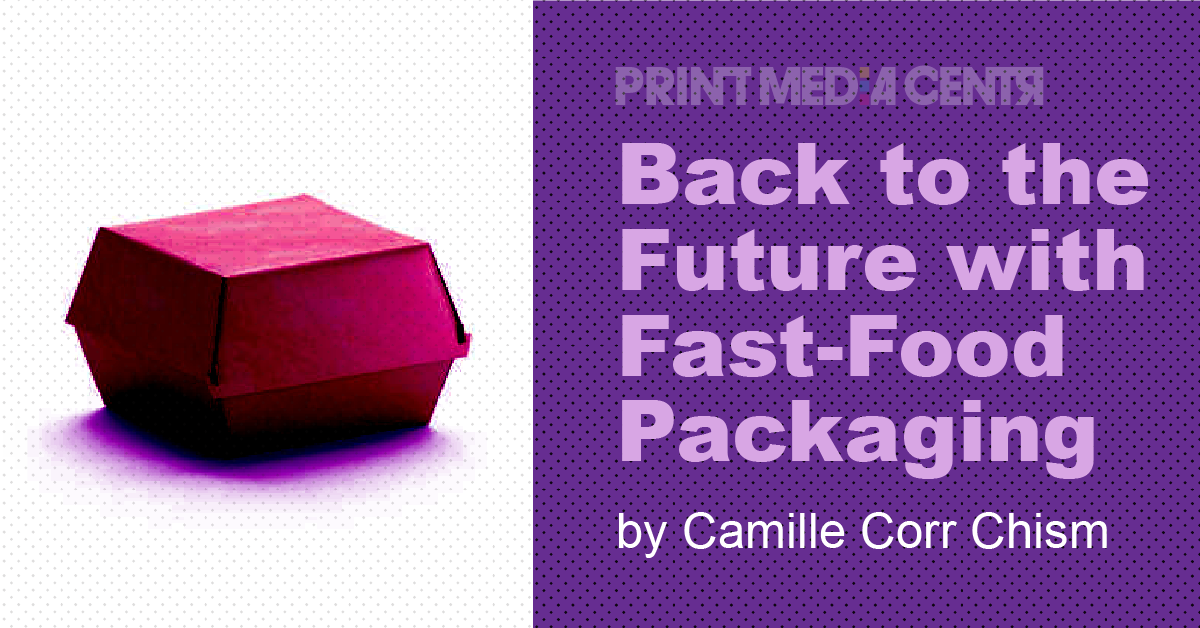
Fast-food packaging is near and dear to my heart since my first job. I joined the packaging team of a fast-food chain packaging supplier after college and learned so many things about what was referred to as environmentally friendly at that time. Since then, it has been important to me to follow trends and changes in fast food packaging over the last three decades. Most people focus on the food they order, packaging is literally thrown away and not given too much thought. Fast-food packaging became important and was noticed in 2021. Once again, the pandemic made another aspect of packaging a much talked about subject. A survey by AdWeek and Harris Poll reported that over 80% of people think about and have concerns with outputs like trash and other waste products, such as packaging, produced by fast-food outlets.
What were some of the factors that made packaging for fast food stand out? Individual servings, meant to emphasize safety and sanitation to prevent COVID-19 were implemented and led to an increase in trash led to more awareness of waste in general.
National chains in particular saw an increase in business (when they are open and have the food). More people stayed close to home and sheltered in place. This meant business at sit-down restaurants took a sizable hit at the beginning of the pandemic. It turns out that larger fast-food chain restaurants showed growth, as they were able to grow through carry out and ordering apps that made it convenient for people to order food and stay at home. This in turn led to a direct increase in business for fast foods, meaning more packaging such as bags, cups, utensils, straws, plates, containers, etc.
We saw advances in packaging in the fast-food arena during 2021 going into 2022 and beyond, many of these were introduced or implemented in the US, Canada, or in specific regions across the globe. Some of the trends we saw were:
Compostable Materials
These materials have been in development for decades but were too expensive and needed improvements in the technology for large-scale, commercial use. Technology advancements, more consumers willing to pay a premium, and consumer desire for sustainable materials meant these materials gained traction and restaurants started to include compostable utensils in takeout orders to alleviate concerns of increased waste in other areas. This effort is led by the selection and use of materials perceived to be sustainable. Use of compostable utensils and even paper straws, reducing napkins, utensils, increased and restaurants even reduced condiment use by supplying upon request.
Throwback Packaging
Clamshells for burgers, paper straws, and changes in the appearance of packaging were popular and reflected designs similar to previous pack designs. McDonald’s and Burger King led the pack with packaging revamps. The clamshell design has long been considered a top choice to maintain the quality of main menu items such as burgers, fish, or chicken sandwiches. Changes included graphics and colors reminiscent of the past. The packaging focused on minimalism and simplified colors. Materials selected have a more natural appearance with unbleached paper and bright colors.
Reusable and Packaging
McDonald’s and Burger King introduced partnerships with loop. The partnerships were announced around the same time. McDonald’s started in the UK and Burger King teamed up with Kraft-Heinz and The Coca Cola Company to roll out reusable packaging. McDonald’s also partnered with Starbucks to recycle cups prior to COVID, but Starbucks moved swiftly to roll out a reusable cup initiate in the Asia Pacific region after the start of the pandemic. Wendy’s committed to using recyclable plastic cups.
PFAS Removal
Again, McDonald’s moved towards another sustainable goal, and Wendy’s pledged to remove Polyfluoroalkyl substances (PFAS) from packaging
Supply Chain
The supply chain slowdown impacted restaurant packaging as well, raw materials such as paper and plastic raw goods made it more difficult to keep packaging in stock, leading to shortages and careful planning of boxes, bags, straws, as well as products shipped in boxes (virtually anything coming into restaurants). Some of these changes drove the choice of bags used in restaurants (paper or plastic) and stores shut down early due to shortages of materials and sometimes labor
No More Plastic
Burger King, Kentucky Fried Chicken, and Pizza Hut (China) are replacing plastic packaging.
Food for Thought
Keep an eye out on popular restaurants to see what packaging changes show up. Burger King and Tim Hortons have the same owner, do you think we will see minimalist packaging and possibly products that can be recycled by loop? Let me know which companies you think will make more packaging changes to impact their carbon footprint?
 Camille Corr Chism, CPPL Fellow, has a diverse background in packaging engineering, design, supply chain, project management, and new product introductions. Her experience includes a variety of industries including food, e-commerce, technology, distribution, pharmaceutical, industrial, and automotive. Earning an MS and BS in Packaging, Camille earned a Six Sigma Black Belt (2019), and a lifetime certification as a Certified Packaging Professional in 2006. She was inducted into the IoPP College of Fellows in 2014.
Camille Corr Chism, CPPL Fellow, has a diverse background in packaging engineering, design, supply chain, project management, and new product introductions. Her experience includes a variety of industries including food, e-commerce, technology, distribution, pharmaceutical, industrial, and automotive. Earning an MS and BS in Packaging, Camille earned a Six Sigma Black Belt (2019), and a lifetime certification as a Certified Packaging Professional in 2006. She was inducted into the IoPP College of Fellows in 2014.
Camille is the owner of Indigo Packaging and Consulting. She is the go-to person for all your packaging products and packaging design needs. Connect with her on LinkedIn, LinkedIn Company Page, Twitter @indigopkg, and Instagram @indigopkg











